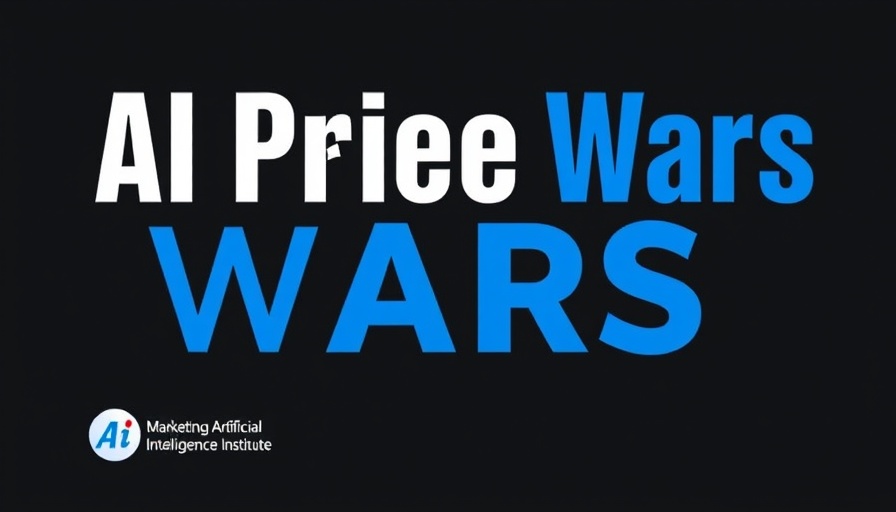
AI Pricing Wars: A New Paradigm
The landscape of AI technology is rapidly evolving, and the current price competition between tech giants Google and Microsoft illustrates just how distinctly their strategies diverge. With Google almost giving away its Gemini AI to boost its Workspace subscription services and Microsoft adopting a consumption-based pricing model, the implications for marketing executives are significant.
Understanding Google’s Strategy: The Gemini Incentive
Google's decision to roll Gemini into its Workspace business plans represents a strategic move to democratize AI access while retaining customers. By subtly adjusting its subscription price from $12 to $14 per user per month, Google offers a substantial value proposition—especially considering the previous higher costs of $32 for separate Gemini access. This approach not only simplifies access for businesses with mixed AI utilization but also effectively enhances the perceived value of the Workspace package.
Microsoft's Consumption-Based Model: Pros and Cons
On the flip side, Microsoft’s strategy revolves around a consumption-based model, which can be beneficial for some users around cost-effectiveness but introduces complexities. The nuanced pricing—one cent for a simple message and up to thirty cents for more intricate tasks—creates a scenario where companies may struggle with predicting their monthly expenses. This unpredictability can deter Chief Financial Officers (CFOs) concerned about fluctuating costs, as budget cap implementations become a more pressing necessity.
Market Dynamics and Competitive Advantages
Industry insights indicate that Google’s robust resources, including state-of-the-art data centers and an extensive distribution network, position it strongly against Microsoft’s innovative yet complicated pricing structure. Paul Roetzer, founder of Marketing AI Institute, highlights that Google’s tactic to absorb the minor price increase while offering Gemini as a core feature allows them to not just simplify pricing but strengthen their market presence amidst growing competition.
The Confusion in AI Features: A Common Pain Point
AI users are increasingly finding themselves overwhelmed by the rapid deployment of features across platforms like Google and Microsoft. As companies scramble to keep pace with technological advancements, the resulting confusion can hinder effective implementation. Timo Springer, an AI enthusiast, shared frustrations that resonate deeply: users are struggling to navigate diversifying features, particularly when pricing structures differ starkly between similar products. Effective communication and clarity about offerings are vital to avoiding user frustration.
Concluding Thoughts: The Future of AI Pricing
As marketing leaders reflect on these shifts, the crucial takeaway lies in understanding the impact of AI pricing on operational budgets and strategic decisions. The contrasting methods of Google and Microsoft demonstrate that pricing is not just a number but a critical determinant of user engagement and satisfaction. The ongoing shifts will likely set new benchmarks for how AI technology interacts with business environments.
 Add Row
Add Row  Add
Add 




Write A Comment